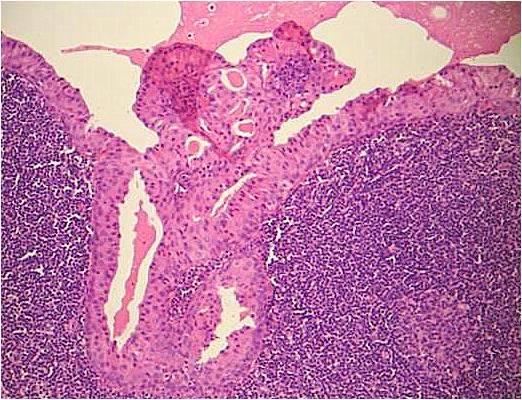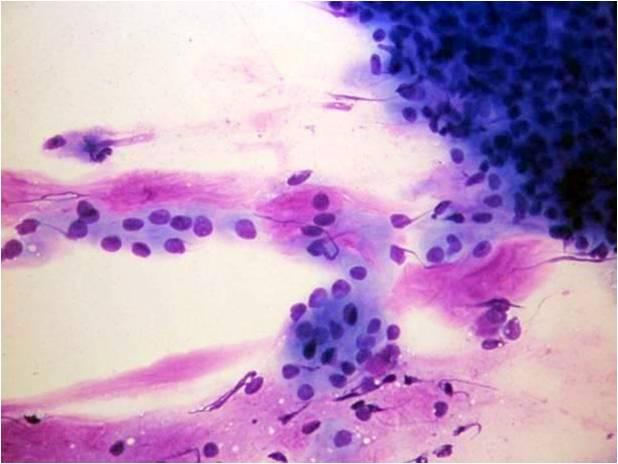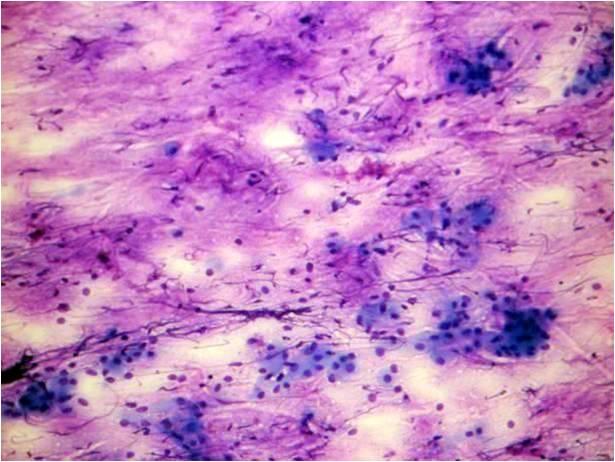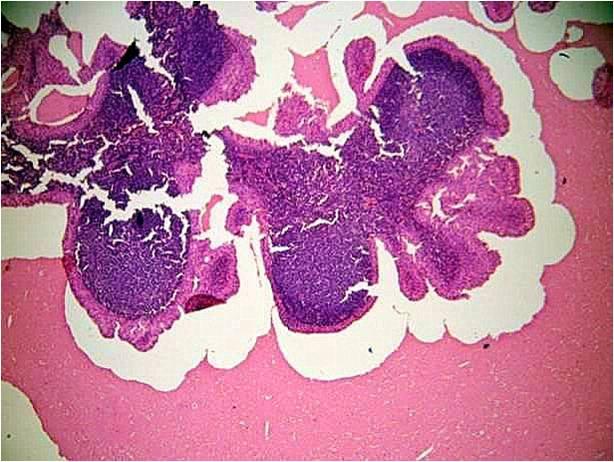This content is also available in:
Español
Português
It occurs mainly in males, it is frequently bilateral. It has a cystic, oncocytic lymphoepithelial appearance. The cytology is that of a cystic lesion. The aspirated material is usually brown, dirty and thick. The background of the smear is composed by this ‘cystic’ dirty fluid, which contains oncocytic cells, lymphocytes and histiocytes. The oncocytes are in papillary or pseudopapillary structures. The Whartin tumor (cystadenoma papillare lymphomatosum) frequently undergoes necrotic changes. This results in squamous metaplasia. The latter may mimic necrotic squamous cancer. The differential diagnosis very important, since squamous carcinoma in the head and neck region is usually necrotic, hence pseudocystic. Nearly all of the patients are smokers.





